
views
X
Trustworthy Source
Centers for Disease Control and Prevention
Main public health institute for the US, run by the Dept. of Health and Human Services
Go to source
In most cases, infections caused by Candida are not serious and are easy to clear up but some may require serious medication or treatment for larger medical problems. Therefore, it is important to seek medical attention if you think you might have thrush.[2]
X
Trustworthy Source
HealthyChildren.org
Health information from the American Academy of Pediatrics.
Go to source
Treating Oral Thrush with Medication
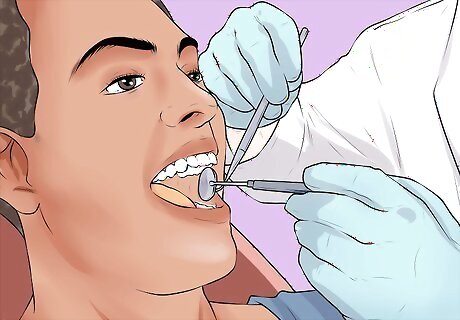
Get diagnosed by a health professional. Doctors and dentists are generally able to diagnose oral thrush simply by looking at the lesions in your mouth. However, some may still do an oral swab to be sure that you have thrush. Make sure that you visit a physician if you suspect that you have thrush. Oral thrush can spread and it may become a serious problem. Do not try to treat it on your own.

Use a Nystatin rinse. Nystatin Swish and Swallow is a commonly prescribed medication for thrush. It helps to clear up infections and yeast growths. To use this medication, swish the medication in your mouth for several minutes, and then swallow it to clear the throat and esophagus. Make sure that you swallow the medication after you finish swishing it. Otherwise, you may develop esophagitis, which is an infection of the esophagus. A common dosage of Nystatin suspension is 100,000 U/mL taken between four to six times every day.
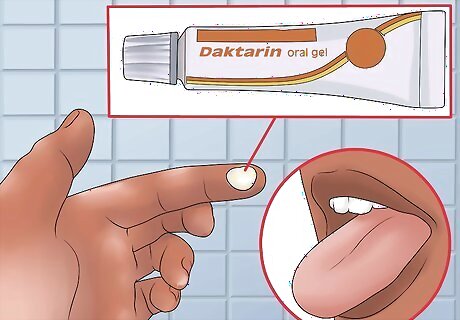
Use miconazole gel. Miconazole gel is currently available as an over-the-counter drug for oral thrush. The most common brand for miconazole is Daktarin oral gel. Extra precautionary measures should be considered before starting the miconazole treatment for people who have liver conditions, pregnant or breastfeeding women, and infants below six months. Apply a pea-sized amount of gel directly to the lesions. If you don’t know how to properly apply the gel, read the instructions that come along with it.
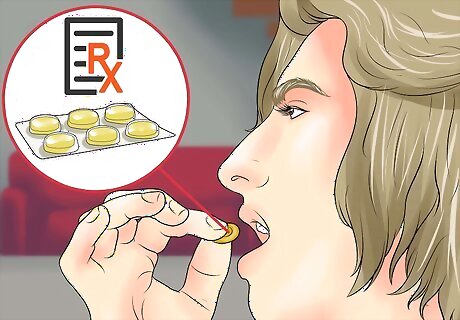
Use prescription lozenges. Nystatin or clotrimazole may also be used in the form of a troche (a lozenge that is dissolved in the mouth). Allow one lozenge to dissolve in your mouth, swishing it gently so that it makes contact with all the surfaces in your mouth. Make sure that you swallow periodically to clear up any infection in your throat. Whether the medication is a rinse or a lozenge, continue using it for at least 48 hours after the symptoms have disappeared. Nystatin pastilles: 200,000 U each, given 4 times a day for 1-2 weeks.
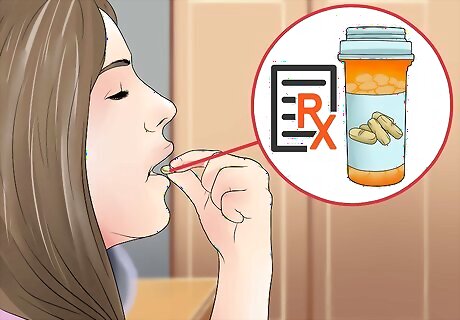
Take prescription pills. If a rinse or lozenge is not successful in clearing up oral thrush, or if the infection has spread beyond the mouth, you will have to take pills to clear up the infection. The oral treatment prescribed is typically fluconazole or an echinocandin. The medication the doctor chooses to prescribe depends on the strain of Candida and on the individual patient (how ill he or she is, whether other illnesses are also present, allergies, and other factors). Oral antifungal medications you can take includes clotrimazole (Mycelex) and fluconazole (Diflucan), which are taken by mouth. Fluconazole is generally prescribed as 400 mg pills; two are taken the first day, then one per day after that. While oral thrush may appear to be gone within the first 2 days of taking medication, it is important to continue the recommended treatment which usually is about 2 weeks. Echinocandin is prescribed as caspofungin at 70 mg on the first day, then 50 mg daily; or, anidulafungin at 200 mg on the first day, then 100 mg daily.
Treat oral thrush if your baby has given it to you. If thrush occurs in a baby who is breastfeeding, the mother may have a Candida infection around her nipples. In this case, the nipples will usually be red, flaky, and itchy, and may be painful during breastfeeding. Two ways to treat this infection include: Nystatin cream: This may be prescribed by the mother’s physician; the usual dose is two to three times per day.
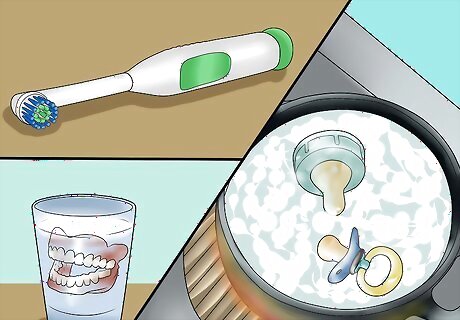
Replace anything that may have gone in your mouth while you had thrush. It is important to sanitize or replace items that may go into the mouth to prevent oral thrush from returning. Replace your toothbrush (or its head, if it’s an electronic one) with a new one. If you wear dentures, soak them overnight in a denture cleaning solution. For babies, boil items such as pacifiers and bottle nipples that are used in the mouth. Wash all dishes in hot water (over 122 degrees), and do not share used dishes or utensils with family members.
Using Home Remedies
Ask your doctor before you try any home remedies for thrush. Keep in mind that thrush can spread and may become serious if it is not treated properly, so it is best to check with your doctor before you try any home remedies. Home remedies should also not be used as a replacement for medical therapy. Instead, try using a home remedy alongside a medical treatment. You should be especially cautious if you have a lowered immune system due to illness, such as HIV or cancer.
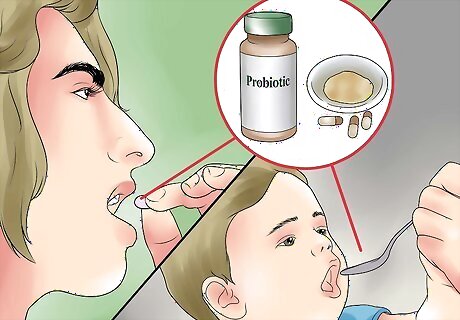
Take a probiotic. Taking probiotics (healthy bacteria) may help clear up thrush, as the healthy bacteria crowd out the invading fungus and restore the normal balance in the mucus membranes. Look for a probiotic supplement that contains at least five billion CFUs (colony forming units) per dose, and take it two to three times daily. If the affected person is a baby or a child, you can open the capsules and sprinkle them on the child’s food, or make a paste from the powder in the capsules and spread it inside the baby’s mouth.
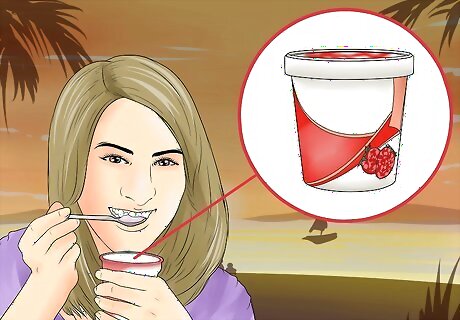
Eat yogurt. You can also get your probiotics from a fermented foods, such as yogurt. However, the dose you receive will be much lower and may be less effective. Choose unsweetened yogurt, since sugar will cause the Candida to grow faster. Eat yogurt once or twice daily making sure to eat slowly and leave a spoonful of yogurt in your mouth as close to the lesions as possible for about 30 seconds before swallowing it. There is conflicting evidence regarding the efficacy on probiotics in yogurt cultures but, in general, this regimen has few negative side effects.
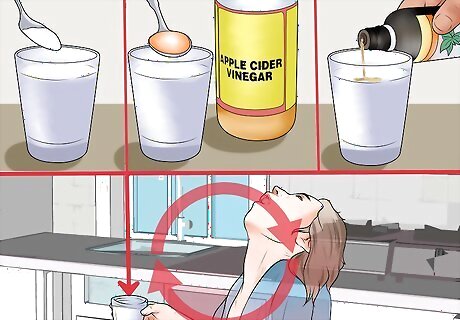
Use a homemade rinse. There are several different kinds of rinses you can try that will get rid of oral thrush. The instructions are the same for each one: swish the solution in your mouth two to four times a day and then spit it out. The rinses include: Saltwater: 1/2 tsp of salt in one of cup water. Apple cider vinegar: one tablespoon of vinegar in one cup of water. Tea tree oil: a few drops of oil in one cup of water. Tea tree oil is toxic if swallowed, so it should only be used as a rinse.

Try gentian violet to get rid of oral thrush. An older remedy for thrush is a dye called gentian violet. No prescription is necessary to get gentian violet. Take a small amount on a cotton swab and lightly cover the affected areas. One treatment should be sufficient. Because it is a dye, be careful not to get it on any clothing or other items you don’t want stained; wear gloves while using it and keep it off of the lips, as it will temporarily stain the skin purple. Use this remedy in consultation with your physician, as it may cause ulcers in the mouth, and has been linked to oropharyngeal cancer in a recent study. Gentian violet should not be swallowed, as it can be toxic to the body when absorbed systemically.
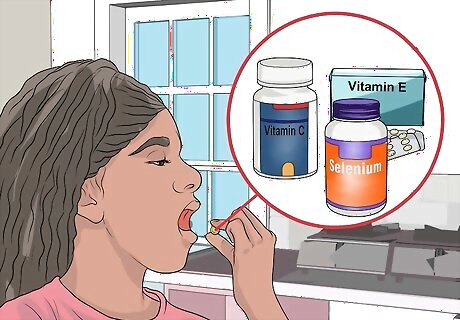
Take vitamins and minerals. Taking vitamin C, as well as other vitamins and minerals, can benefit you by maintaining your immune system and helping to fight off infection while also reducing inflammation. Some suggested dosages are: Vitamin C - 500mg to 1000mg per day Vitamin E - 200 IU to 400 IU per day Selenium - 200 mcg per day
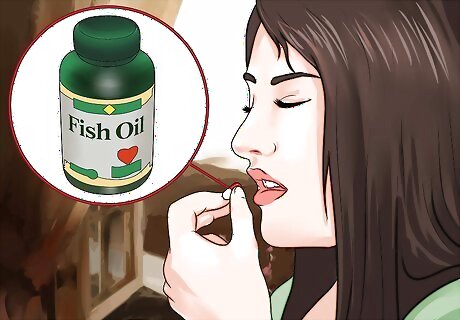
Make sure to eat essential fatty acids. These can help your body to reduce inflammation, while providing additional benefits such as reducing animal fats from your regular diet. For example, omega-6, also known as evening primrose, can be taken alongside omega-3 (fish oil) at a dosing of 2 tablespoons oil per day, or 1000mg to 1500mg twice per day. You can also take caprylic acid. This supplement can be taken in a dosing of 1 gram along with your meals. Caprylic acid is a fatty acid that may confer some antifungal properties.
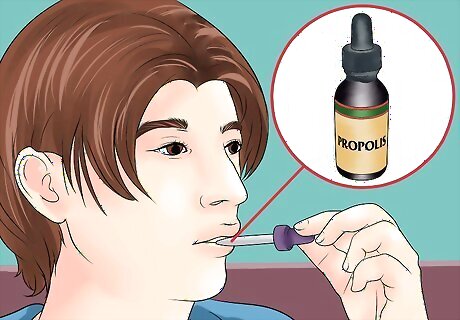
Take propolis. This is a naturally occurring substance obtained from pine resin. It is created by bees and laboratory testing has demonstrated positive antifungal results. Take note, however, if you have allergies to honey or have asthma, you should discuss this as a treatment option prior to starting on any regimen.

Use herbal treatments. It is important to evaluate herbal supplements (and the possible medication interactions) with your doctor prior to beginning any treatments. While herbs can confer health benefits, they can also contribute to negative interactions and outcomes to your health. Beneficial herbal supplements that may help oral thrush include: Garlic - Garlic is known to have antifungal properties. Generally, dosing is one clove of garlic per day (equivalent to 4,000 to 5,000 mcg of allicin). Garlic can interact with medication, increasing the risk of bleeding, and is known to interact with blood thinners, such as clopidogrel (Plavix), warfarin (coumadin), or aspirin. HIV medications can also be affected by garlic. Echinacea- Echinacea derived juice has been demonstrated to confer resistance against vaginal yeast infections that occur frequently. Taking between 2ml to 4ml each day can help to fight against this. Again, echinacea can interact with medications and it is important to discuss potential complications with your doctor prior to beginning a regimen. Tea Tree oil - Tea tree oil has been shown in various studies to have antifungal properties when used as a mouthwash, effectively treating oral thrush. Tea tree oil can be toxic when ingested orally, so be sure to only use this as a mouthwash (after discussing with your physician). Pomegranate - Yes, pomegranate gel has been demonstrated to help fight oral thrush almost as effectively as miconazole gel in one study that associated with denture stomatitis.




















Comments
0 comment